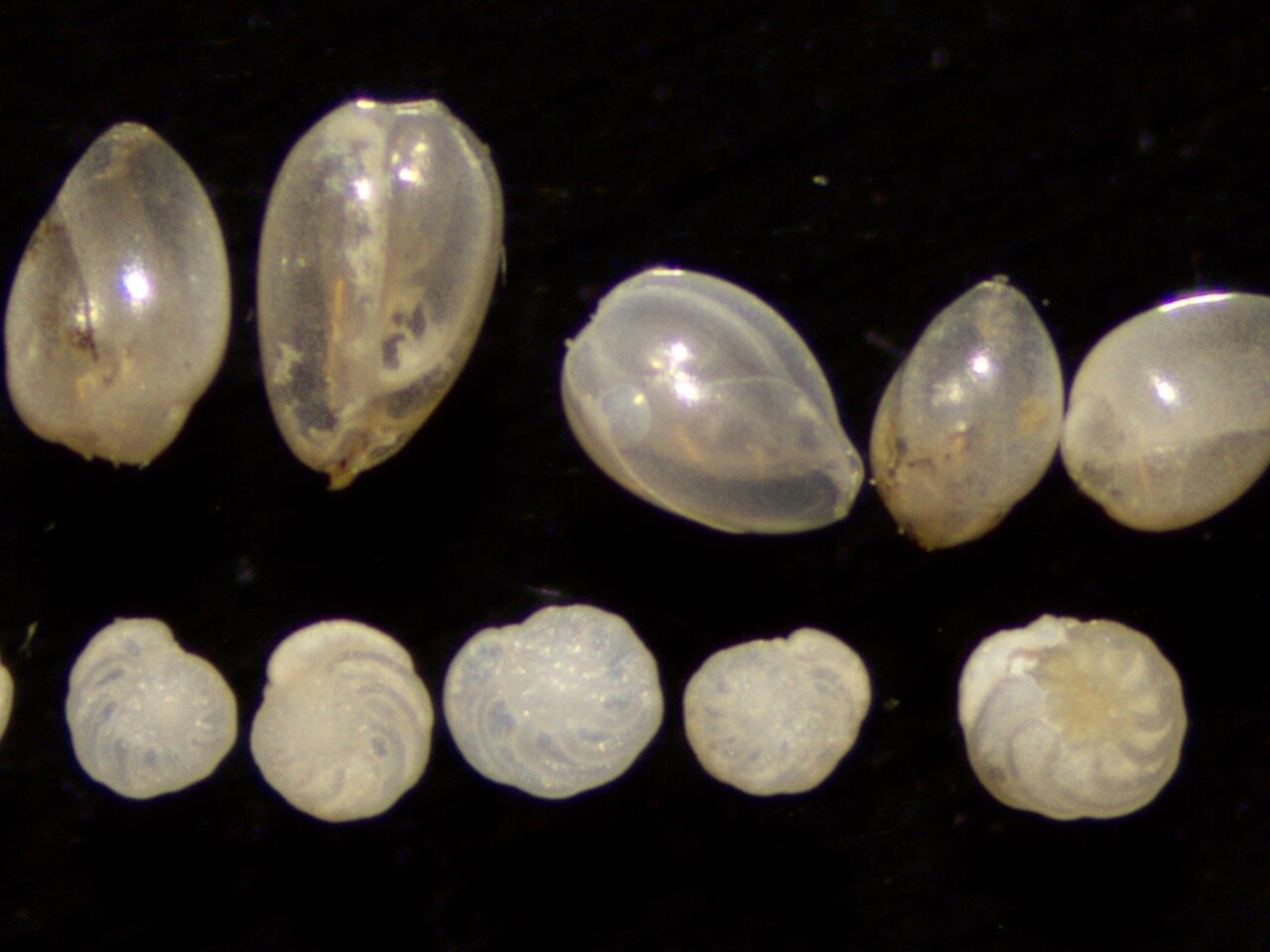× close
Researchers at Georgia Institute of Technology have finished investigating how the prehistoric weakening of a major ocean current led to a decline in ocean nutrients and negative impacts on North Atlantic ocean life. The results support predictions about how our oceans might react to a changing climate—and what that means for ocean life.
The North Atlantic ocean is a hub of biological activity, due in large part to the Gulf Stream, which supplies a rich current of nutrients. Scientists have speculated that our changing climate may lead to a decline of nutrients and biological activity in the North Atlantic due to a weakening of the ocean circulation—but this theory has previously been supported only by models.
Now, by studying sediments buried at the Gulf Stream’s origin, the team has conducted a first-of-its-kind investigation into the impact of a similar climate-induced decline nearly 13,000 years ago, when Earth exited the last ice age.
The paper, “A Diminished North Atlantic Nutrient Stream During Younger Dryas Climate Reversal” was published in Science this week. Led by Jean Lynch-Stieglitz, a professor in the School of Earth of Atmospheric Sciences at Georgia Tech, the team also included Lynch-Stieglitz’s past students: Tyler Vollmer, Shannon Valley, and Eric Blackmon, along with Sifan Gu (Jiao Tong University School of Oceanography), and Thomas Marchitto (University of Colorado, Boulder).
“The research tests a concept that has previously only been explored in theory and models,” Lynch-Stieglitz says. “The large-scale Atlantic overturning circulation provides the nutrients that underly biological productivity in the North Atlantic.”
Since the current is expected to continue weakening over the next century as a result of greenhouse gas emissions, researchers anticipate that the North Atlantic will receive fewer and fewer nutrients.
“This concept has real-world implications for the future health of the oceans and fisheries,” Lynch-Stieglitz explains. Impacts range from a decline in fish populations to potentially impacting the amount of CO2 the ocean can uptake.
“The dramatic climate changes the Earth has experienced in the past can help us understand what parts of the Earth system are vulnerable to change, and help us evaluate ideas about the impacts of the ongoing climate change,” she adds.
× close
An unlikely mystery
The team studied the Younger Dryas, a period of time during the transition out of the last ice age when there was a weakening of the Atlantic circulation. By examining how the nutrient stream changed when circulation weakened in the past, the researchers hoped to better understand what we may expect from today’s warming oceans.
However, the team didn’t initially set out with this goal in mind—the work began as an undergraduate research project with an intriguing mystery. Eric Blackmon, then a student in Lynch-Stieglitz’s lab, was interested in investigating the disappearance of a species of plankton from the North Atlantic Ocean during the last ice age.
“The outcome of this study was puzzling,” Lynch-Stieglitz recalls. The team decided to use a rarely used technique to better understand the results. The method of reconstructing seawater oxygen concentration produced an unusually clear record of how oxygen concentration in the seawater had changed through time.
“Our team realized that when combined with an earlier reconstruction of seawater chemistry, the technique provided key information on the history and mechanisms of nutrient delivery into the North Atlantic Ocean,” Lynch-Stieglitz says. “We set out to answer a small question, and along the way discovered our data has broader implications than we anticipated.”
Beautiful tiny shells
With this new technique, the team analyzed layers of sediment in the Florida Straits, a narrow passage between the Florida Keys and Cuba, where the Gulf of Mexico and the Atlantic Ocean meet. By coring into these layers and taking a cylindrical sample, “the layers of accumulating sediments provide an environmental history at the site,” Lynch-Stieglitz explains. In this instance, “we looked at how the shells of single-celled organisms called foraminifera changed with time.” Because foraminifera live on the ocean floor, their shells accumulate within each layer of sediment, preserving important chemical signatures that can be used to reconstruct the chemistry of the ocean in which they resided.
× close
“It is pretty amazing that ocean chemistry of the past can be reconstructed in such detail using beautiful, tiny shells,” Lynch-Stieglitz says.
The research showed that during the Younger Dryas, as the overturning circulation weakened, nutrients in the Gulf Stream decreased and the amount of oxygen in the Florida Straits increased. The team also found that as the nutrient stream decreased, the amount of biological productivity in the North Atlantic decreased as well.
“The study represents an important development of the carbon isotope-based proxy for past oxygen concentrations,” Lynch-Stieglitz says. “The record is very clean, and the magnitude and timing of the changes in dissolved oxygen are mirrored to an astonishing degree in the phosphate reconstruction.”
Beyond climate
Beyond these findings about how the ocean works, the team’s study of foraminifera also provides new ways to understand how nutrients are cycled around the ocean, and how we investigate this. These windows into how Earth’s oceans changed in the past provide a critical tool for testing models, letting us better predict how our oceans and the resources they provide may respond to climate change in the future.
“The physical changes in the earth system can have profound changes on life in the ocean, and far-reaching impacts,” Lynch-Stieglitz notes. “Climate change is about more than climate.”
More information:
Jean Lynch-Stieglitz et al, A diminished North Atlantic nutrient stream during Younger Dryas climate reversal, Science (2024). DOI: 10.1126/science.adi5543

Dr. Thomas Hughes is a UK-based scientist and science communicator who makes complex topics accessible to readers. His articles explore breakthroughs in various scientific disciplines, from space exploration to cutting-edge research.








